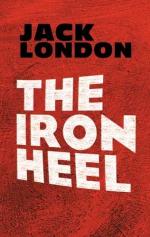It was merely the logical development of what in the nineteenth century had been known as grab-sharing. In the industrial warfare of that time, profit-sharing had been tried. That is, the capitalists had striven to placate the workers by interesting them financially in their work. But profit-sharing, as a system, was ridiculous and impossible. Profit-sharing could be successful only in isolated cases in the midst of a system of industrial strife; for if all labor and all capital shared profits, the same conditions would obtain as did obtain when there was no profit-sharing.
So, out of the unpractical idea of profit-sharing, arose the practical idea of grab-sharing. “Give us more pay and charge it to the public,” was the slogan of the strong unions.* And here and there this selfish policy worked successfully. In charging it to the public, it was charged to the great mass of unorganized labor and of weakly organized labor. These workers actually paid the increased wages of their stronger brothers who were members of unions that were labor monopolies. This idea, as I say, was merely carried to its logical conclusion, on a large scale, by the combination of the oligarchs and the favored unions.
* All the railroad unions entered into this combination with the oligarchs, and it is of interest to note that the first definite application of the policy of profit-grabbing was made by a railroad union in the nineteenth century A.D., namely, the Brotherhood of Locomotive Engineers. P. M. Arthur was for twenty years Grand Chief of the Brotherhood. After the strike on the Pennsylvania Railroad in 1877, he broached a scheme to have the Locomotive Engineers make terms with the railroads and to “go it alone” so far as the rest of the labor unions were concerned. This scheme was eminently successful. It was as successful as it was selfish, and out of it was coined the word “arthurization,” to denote grab-sharing on the part of labor unions. This word “arthurization” has long puzzled the etymologists, but its derivation, I hope, is now made clear.
As soon as the secret of the defection of the favored unions leaked out, there were rumblings and mutterings in the labor world. Next, the favored unions withdrew from the international organizations and broke off all affiliations. Then came trouble and violence. The members of the favored unions were branded as traitors, and in saloons and brothels, on the streets and at work, and, in fact, everywhere, they were assaulted by the comrades they had so treacherously deserted.
Countless heads were broken, and there were many killed. No member of the favored unions was safe. They gathered together in bands in order to go to work or to return from work. They walked always in the middle of the street. On the sidewalk they were liable to have their skulls crushed by bricks and cobblestones thrown from windows and house-tops. They were permitted to carry weapons, and the authorities aided them in every way. Their persecutors were sentenced to long terms in prison, where they were harshly treated; while no man, not a member of the favored unions, was permitted to carry weapons. Violation of this law was made a high misdemeanor and punished accordingly.




